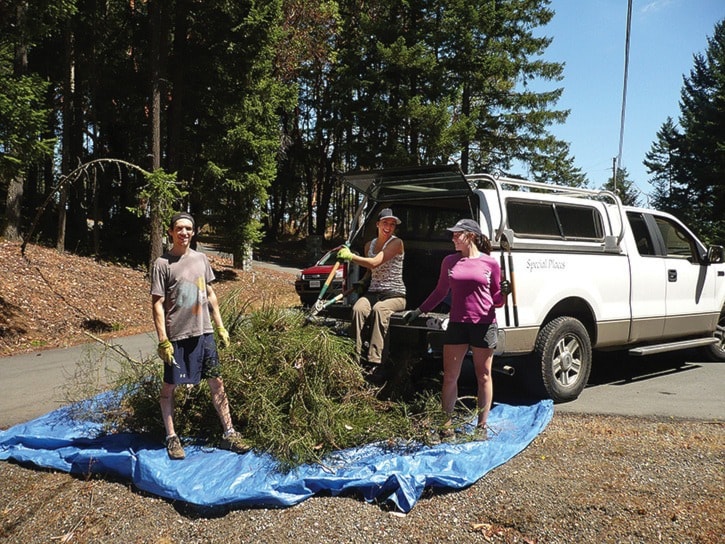This summer, volunteers and staff members from The Land Conservancy (TLC) have taken to traversing Highlands with pruners in hand. Their aim: stripping the invasive species Scotch broom from the rocky soils.
But this is no overnight job, warns Torrey Archer, TLC’s covenant co-ordinator. She said Scotch broom seeds can lie dormant in the soil for up to 80 years, which is why constant action is required. This seemingly never-ending process has frustrated a number of people, some of whom have adopted a why-bother attitude, Archer said.
“It had gotten to a point where something needed to be done,” she said. “It’s a really hard problem to get rid of.”
Land Conservancy staff noticed an increase in invasive species, including Scotch broom, thistle and daphne/spurge laurel, in covenanted areas in the Highlands and instead of continuing to simply monitor the situation, they decided to take action. Working the with District of Highlands and with advise from Broombusters, TLC developed a plan to eliminate Scotch broom from covenanted regions over the next few years.
Broombusters is a grassroots organization that was established in 2006 whose purpose is to limit the spread and prevent new infestations of broom. The organization helps communities and individuals with education and co-ordinating removal.
Archer is hopeful, noting the success of Broombusters up Island, saying that their area is now roughly 90 per cent broom free. “We wanted to follow suit.”
“Where we can help out, we help everyone.” She added sometimes things like limited municipal budgets can effect broom removal programs.
This four-phase program began with the assessment of covenanted areas, which took inventory of both endangered and invasive species in July. Phase two, or the removal phase, is what the project is working on now by targeting areas with low ratios of invasive to native plants. Areas with low ratios are targeted first because they are the most vulnerable. By removing seedlings and small plants from those areas, the native vegetation has a better chance of filling in the voids left and remains free from invaders.
“It can kind of seem counter-intuitive,” Archer said, but you do less damage to the area that way.
“This is more of our soft start.” She said the program would spend the rainy months evaluating (phase three), then have another assessment phase in the spring followed immediately by a pull. Phase four is repeating the process in areas with higher ratios of invasive species. She said the main focus this year was getting a comprehensive assessment done, which will allow the program to track its progress.
Back in April, the Highlands District Community Association brought residents together for an organized broom cut, with the intent of making it an annual spring event. Highlands also became of a member of Broombusters.
Archer encourages members of the public to get involved with upcoming broom cuttings scheduled for the rest of August and in the spring. For more information or to volunteer you can call her at 250-479-8053 or email covenants@conservancy.bc.ca.
katie@goldstreamgazette.com
